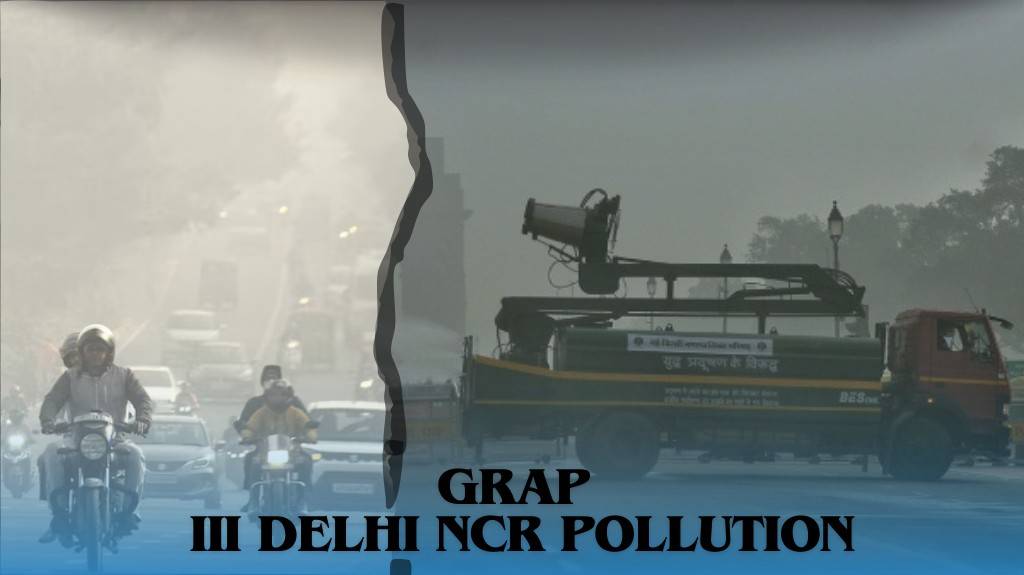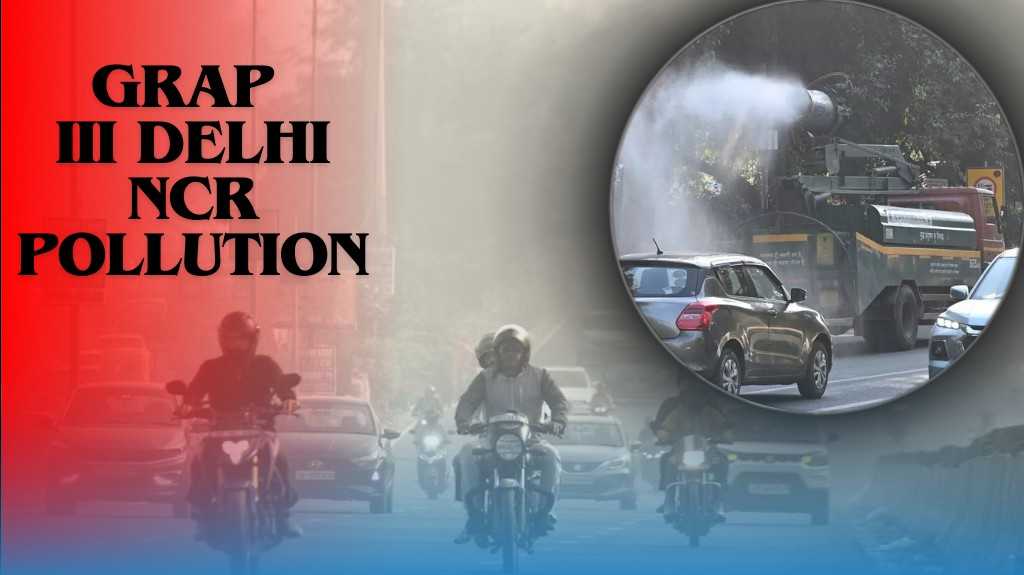GRAP III Delhi NCR pollution: Delhi’s air quality reached alarming levels on Monday, with the Air Quality Index (AQI) touching 398 by night. Some hotspots, such as Anand Vihar, recorded AQI values as high as 460. The government’s air quality management body, the Commission for Air Quality Management (CAQM), has now implemented Stage III restrictions under the Graded Response Action Plan (GRAP) to combat the rising pollution levels. The implementation of GRAP III Delhi NCR pollution measures is crucial to addressing this crisis.
| Stage | Air Quality Index (AQI) | Category |
|---|---|---|
| Stage I | 201-300 | Poor |
| Stage II | 301-400 | Very Poor |
| Stage III | 401-450 | Severe |
| Stage IV | >450 | Severe Plus |
Rapid Deterioration of Air Quality in Delhi-NCR
On Monday, Delhi’s 24-hour average AQI was 379 by 4 p.m., worsening further to 398 by 9 p.m. The CAQM invoked GRAP Stage III restrictions after noting that the AQI had breached the 350 mark earlier in the day and was likely to deteriorate further due to unfavorable weather conditions, including calm winds and the formation of an inversion layer. This layer restricts the vertical dispersal of pollutants, exacerbating pollution levels. Such conditions underscore the need for effective GRAP III Delhi NCR pollution management.
GRAP Stage III: Key Measures and Impacts
To address the severe air pollution, GRAP Stage III measures include:
- Educational Institutions: Schools and colleges in Delhi, Gurugram, Faridabad, Ghaziabad, and Gautam Budh Nagar must shift classes up to Class V to a hybrid mode. Parents and students have the option to choose online education.
- Diesel Vehicle Restrictions: Non-essential diesel-operated medium goods vehicles (BS-IV or older standards) are banned within Delhi. Similarly, non-essential diesel light commercial vehicles registered outside Delhi must also meet BS-IV standards or face restrictions.
- Staggered Office Hours: State governments in Delhi-NCR are directed to stagger the opening hours of public offices and municipal bodies. The Central government may follow suit for its offices.
These measures under GRAP III Delhi NCR pollution controls aim to reduce emissions and improve air quality.
Hotspot Data: Worst-Affected Areas
| Location | AQI Value |
| Anand Vihar | 460 |
| Rohini | 446 |
| Wazirpur | 444 |
| Jahangirpuri | 442 |
| Vivek Vihar | 442 |
| Punjabi Bagh | 441 |
With 23 out of 37 monitoring spots reporting AQI above 400, these areas are experiencing hazardous air quality conditions. The GRAP III Delhi NCR pollution measures are critical to protecting public health in these hotspots.
Forecast and Future Expectations

The India Meteorological Department (IMD) and the Indian Institute of Tropical Meteorology have forecasted that air quality will fluctuate between the higher end of the ‘Very Poor’ category and the ‘Severe’ category in the coming days. Calm wind conditions and stagnant atmospheric dynamics are expected to contribute to the continued buildup of pollutants. This scenario highlights the ongoing importance of GRAP III Delhi NCR pollution strategies.
Why GRAP Stage III Is Crucial
Implementing GRAP Stage III aims to mitigate the adverse impacts of severe air pollution on public health. By taking proactive measures, such as restricting diesel vehicles and encouraging online education, authorities hope to curb further deterioration. The keyword “GRAP III Delhi NCR pollution” underscores the significance of these interventions during this critical period.
Public Advisory
Residents are advised to:
- Limit outdoor activities, especially for vulnerable groups like children and the elderly.
- Use public transportation to reduce vehicular emissions.
- Follow all guidelines issued under GRAP Stage III to contribute to improving air quality in Delhi-NCR.
The GRAP III Delhi NCR pollution measures require active participation from both authorities and residents. With continued efforts and public cooperation, Delhi-NCR aims to tackle the severe air quality crisis effectively. GRAP III Delhi NCR pollution measures remain the cornerstone of efforts to combat hazardous air quality levels.
READ THIS ALSO




